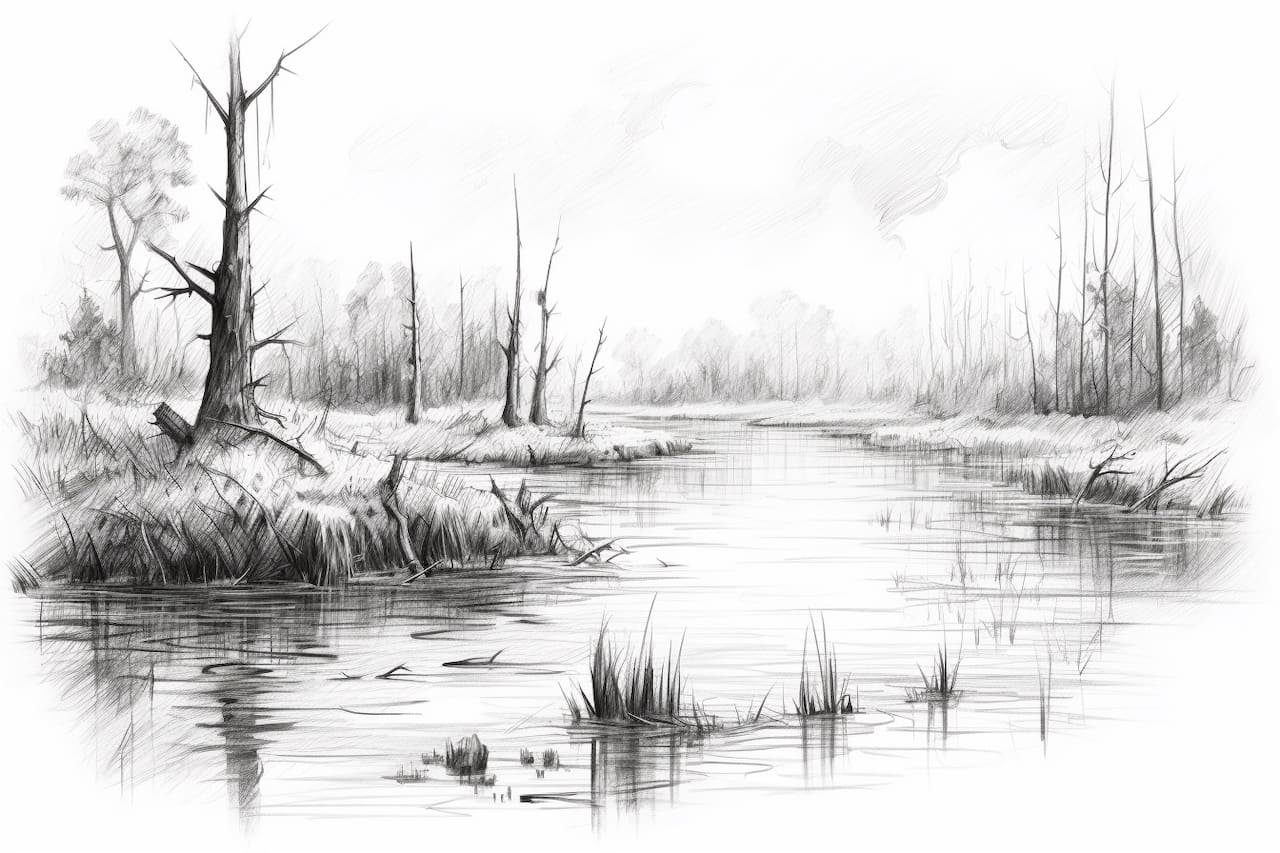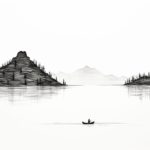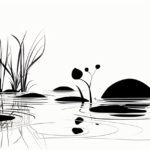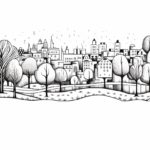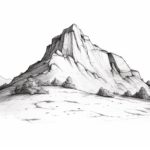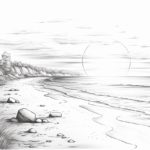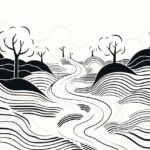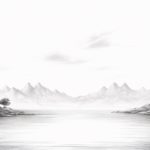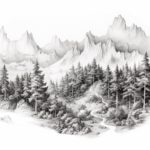Welcome to this step-by-step guide on how to draw a swamp! In this tutorial, I will walk you through the process of creating a realistic and atmospheric swamp scene. Whether you’re a beginner or an experienced artist, these instructions will help you bring your swamp to life on paper.
Materials Required
Before we begin, make sure you have the following materials ready:
- Drawing paper
- Pencil (preferably a set of pencils with different hardness, such as HB, 2B, 4B, and 6B)
- Eraser
- Fine-tipped markers or pens (optional)
- Colored pencils or watercolor paints (optional)
Make sure to have a clean and well-lit workspace, as it will allow you to focus on your drawing without any distractions. Now, let’s dive into creating your own swamp masterpiece!
Step 1: Sketch the Basic Composition
Start by lightly sketching the basic composition of your swamp on your drawing paper. Consider the elements you want to include, such as trees, water, vegetation, and any wildlife. You can use reference images to help you visualize the scene and get a better understanding of the shapes and forms.
Step 2: Define the Horizon Line and Vanishing Point
Determine the horizon line, which is the imaginary line where the sky and the ground meet. This will establish the overall perspective of your swamp. For a more immersive effect, you can also designate a vanishing point, which is a point on the horizon line where the elements in your composition will converge.
Step 3: Create the Background
Start by adding the background elements of your swamp. Use light and loose pencil strokes to sketch in the trees, distant hills, or any other features you want to include. Remember to consider the perspective and make the elements smaller and less detailed as they recede into the distance.
Step 4: Add the Water and Reflections
Next, add the water to your swamp scene. Use curved lines to indicate the shape of the water, and add ripples or waves to create a sense of movement. To make the water more realistic, include reflections of the surrounding objects. These reflections should mirror the shapes and colors of the objects above the water.
Step 5: Draw the Vegetation
Now it’s time to add the vegetation that thrives in the swamp. Sketch in clumps of grass, reeds, and lily pads using short, irregular lines. Vary the sizes, shapes, and angles of the vegetation to make your swamp look more organic and natural. You can also include water plants, such as floating moss or water lilies, to add depth to your composition.
Step 6: Detail the Trees
Focus on the trees in your swamp. Use a combination of soft and hard pencil strokes to add texture and shading to the trunks and branches. Pay attention to the direction of the light source and create highlights and shadows accordingly. Add foliage to the trees by lightly sketching in the shape of the leaves or foliage clusters. Remember to vary the shapes and sizes to make your trees look diverse and interesting.
Step 7: Enhance the Atmosphere
To enhance the atmospheric effect of your swamp, use cross-hatching or stippling techniques to add depth and texture to the water, vegetation, and other elements. You can also darken the shadows and add more contrast to make your swamp scene appear more dramatic and moody. Experiment with different pencil grades and shading techniques to achieve the desired effect.
Step 8: Optional Enhancements
If you want to take your swamp drawing to the next level, consider adding additional details and enhancements. You can use fine-tipped markers or pens to outline and define certain elements. This can create a bold and graphic effect. Alternatively, you can use colored pencils or watercolor paints to add color and vibrancy to your swamp scene. Explore different techniques and mediums to find what works best for you.
Conclusion
Congratulations on completing your swamp drawing! By following these steps, you have created a realistic and atmospheric swamp scene. Remember to practice and experiment with different elements to add your own personal touch to your artwork. Enjoy the process and have fun bringing your swamp to life!

